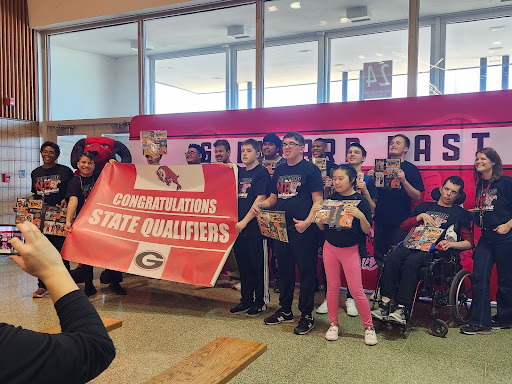Faculty seeks to address equity issues at Glenbard
All around the country, people are becoming more aware of racial inequality and inequity following the acts of police brutality seen through social media this summer. In our district, the change for equality and equity are in the works.
A committee has been formed to enact equity, and the social studies department is creating a more inclusive curriculum.
After the tragedy of George Floyd and protests following it, some teachers started brainstorming what they could do to be more inclusive to all students. They formed an equity committee called STEP. It stands for Student Teacher Equity Partnership. This committee holds discussions for teachers to become more aware of the racial issues in our world and more specifically at our school. It is a safe place to ask questions and try to change our school for the better.
Ms. Elizabeth Fleming, an English teacher, started the committee. She said, “I remember laying in bed feeling so hopeless and like I didn’t know what to do. I am a white person and I have grown up with the privileges of being white. So I felt like I needed to help without thinking that I could fix social injustice. So I called some colleagues who I know feel similarly and we asked Mr. Anderson what we could do.”
Around 15 teachers have attended the two online meetings, and right now they are using breakout rooms for teachers to brainstorm what they can do for the students. Currently, it is just for teachers, but soon it will be open for students.
“We have had meetings with just teachers trying to develop a common language, and common definitions so that as we move forward when we include students, we can talk about what racism means and what equity looks like,” said Fleming.
Along with Glenbard East, District 87 has developed ways to enact equity at Glenbard. STEP is under an umbrella of programs to make the four buildings equitable for all students, Fleming said.
“One of the initiatives coming from the district is trying to make sure that our schools are more equitable. So as a district and individually as Glenbard East, we are trying to take care of the unique needs that we have from our school. We are looking into how we can spread this conversation to kids and community teachers. We want to look at our discipline systems and our curriculum and try to figure out the best way forward to ensure that all students are included,” she said.
Joan Witkus, Assistant Principal at East, says, “Recently, Glenbard has done a great deal with professional development and helping staff deepen their own understanding of how equity and inequity operate in organizations and societies. Our staff has worked hard to find and eliminate inequities to improve academic outcomes for all. We have been examining the impact of race on student achievement. Professional development opportunities such as Equity.”
The district has also done a great deal over the years to secure equity in all student’s education. Last year District 87 described a portrait of what a Glenbard graduate should look like. This includes embracing diversity.
Witkus describes this, saying, “Profile of a Graduate is a collection of attributes defined by our community stakeholders that characterizes what it means to be a graduate of Glenbard District 87. Across the district, we are engaging teachers in conversations about ways to build both teacher and student ownership around these attributes through professional development opportunities that ultimately impact curriculum and instruction development.”
Glenbard has pushed for students of color and low income to be in Honors and AP classes. They realized that many were not taking these courses because they didn’t have the resources to do so. They made AP Lunch Study and AP Reach to be more equitable in response to this.
“No Child Left Behind was signed into law in 2001 and schools were held accountable for student achievement broken down by race and socioeconomic status. Once again, the data reflected we were far from equitable in our practices. Although the basic track was gone, we still saw very few students of color and low socioeconomic status in our Honors and AP courses. In an attempt to address this we began work with Equal Opportunity Schools to look deeper at our placement process and resources offered to both students and teachers when leveling up academically. Offering students help during the school day was key to students stretching themselves academically especially due to their limited availability before and after school hours. AP Lunch Study and AP Reach classes were developed to accommodate students’ needs,” Says Witkus.
The social studies department chairs of Glenbard sent out a letter explaining their plan to be more inclusive to all students in their curriculum.
The departments have six steps to accomplish this. The steps include analyzing the issue of racial inequality in the district, training staff on diversity and inclusion, having sessions where staff and students of color can discuss these issues, getting students involved in equality organizations, recruiting candidates of color by being in better communication with historically black universities, and listening to the voices of students and families.
Jason Jaffe is the social studies department chair for Glenbard East. He says, “The Glenbard East Social Studies Department is filled with excellent educators committed to deepening students’ understanding of our histories and of the present world around them. We are continually assessing our practices to ensure we are serving all students’ needs, fostering critical thinking, and addressing student interest. We look forward to continuing the work that allows our social studies classes to serve as both mirrors and windows for our students.”

Maggie is a senior, this is her fourth year with the Echo, and is returning as Editor-in-Chief! In addition to the Echo, Maggie plays violin, is orchestra...








